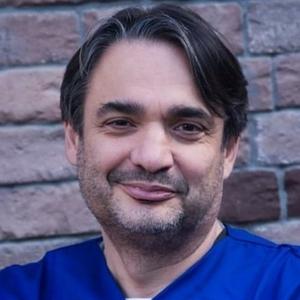Clinical outcomes after guided bone regeneration with dehiscence during the healing period
INTRODUCTION
Guided bone regeneration (GBR) is a viable option to augment resorbed alveolar ridge defects and restore adequate volume and quality of bone to allow implant placement (1,2). Although in most cases benign, dehiscence may occur during the post-GBR healing process, and it may lead to patient discomfort and dissatisfaction. Furthermore, previous research suggests that in cases where dehiscence is accompanied by membrane exposure, it may have negative consequences on the extent of bone gain (3).
The aim of this study was to assess the influence of wound dehiscence during post-GBR healing period on clinical outcome measures.
Key Results
- Overall, dehiscence was observed in 10 instances (21.7%) in 9 out of 46 patients. They were resolved before the 12-week follow-up without any intervention, except in the only 2 cases of co-occurring membrane exposure (corresponding to 4.3% of the patient population).
- The pre-treatment ridge width (RW) in these patients was 2.8 ± 0.7 mm and 3.9 ± 0.8 mm when measured 1 and 3 mm from the crest, respectively. GBR led to an increase of the RW by 3.2 ± 1.0 mm at 1 mm and 4.1 ± 1.7 mm at 3 mm distance from the crest.
- All sites were considered adequate for implant placement and received 17 implants. Of those, 1 failed to osseointegrate before prosthetic delivery and two displayed radiolucency at the 1-year follow-up.
CITATION
Presented at the 30th European Association for Osseointegration (EAO) and 37th German Association of Oral Implantology (DGI) Joint Meeting 2023, September 28 to September 30, 2023
Lorenz J, Ghanaati S, Aleksic Z, Milinkovic I, Lazic Z, Magic M, Wessing B, Schleich R, Mariotti G, Merli M, Bressan E, de Stavola L, & R Sader. (September 2023) EAODGI2023-588/PO-SU-049 | Clinical outcomes after guided bone regeneration with dehiscence during the healing period. E-Poster. Clin Oral Impl Res; Vol 34 (S27); 229-230. DOI: 10.1111/clr.14162
References
- de Azambuja Carvalho PH, Dos Santos Trento G, Borin Moura L, Cunha G, Cabrini Gabrielli MA, Pereira-Filho VA. (2019) Horizontal ridge augmentation using xenogenous bone graft-systematic review. Oral Maxillofac Surg 23(3):271-279.
- Urban IA, Wessing B, Alández N, Meloni S, González-Martin O, Polizzi G, Sanz-Sanchez I, Montero E, Zechner W. (2019) A multicenter randomized controlled trial using a novel collagen membrane for guided bone regeneration at dehisced single implant sites: Outcome at prosthetic delivery and at 1-year follow-up Clin Oral Implants Res 30(6):487-497.
- Wessing B, Emmerich M, Bozkurt A. (2016). Horizontal Ridge Augmentation with a Novel Resorbable Collagen Membrane: A Retrospective Analysis of 36 Consecutive Patients. Int J Periodontics Restorative Dent, 36(2), 179-187.





No question
I leave here information instead of a question.We developed a membrane in Brazil that is intentionally left exposed to the oral environment and can be removed 7 days after surgery. We eliminate the problem when suture dehiscence occurs. The more exposed the membrane is left, the greater the gain of keratinized tissue. This biomaterial has been commercialized in Brazil for 13 years, with total predictability in results in both bone tissue gain and keratinized tissue. Furthermore, it eliminates the use of filling materials, using only the blood clot.Dr Munir SalomãoResearcher
I leave here information instead of a question.
We developed a membrane in Brazil that is intentionally left exposed to the oral environment and can be removed 7 days after surgery. We eliminate the problem when suture dehiscence occurs. The more exposed the membrane is left, the greater the gain of keratinized tissue. This biomaterial has been commercialized in Brazil for 13 years, with total predictability in results in both bone tissue gain and keratinized tissue. Furthermore, it eliminates the use of filling materials, using only the blood clot.
Dr Munir Salomão
Researcher